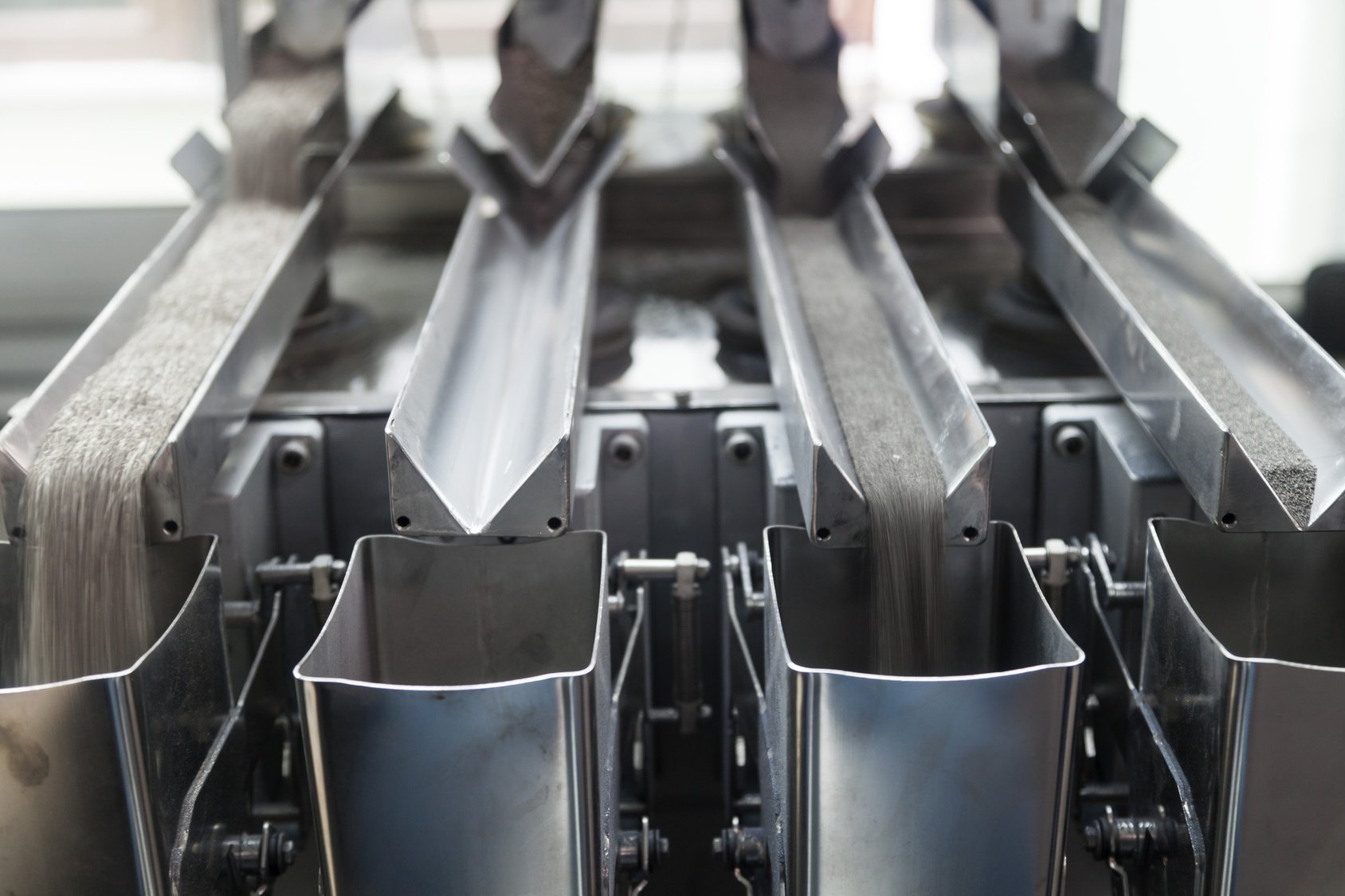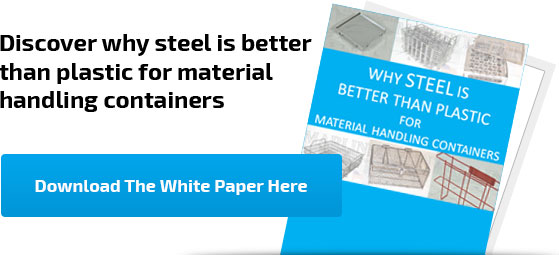Marlin Steel uses a lot of to automated manufacturing equip ment get the job done. However, while the machines do the heavy lifting, the human element still needs to be there to get the most out of this manufacturing automation.
ment get the job done. However, while the machines do the heavy lifting, the human element still needs to be there to get the most out of this manufacturing automation.
Take, for example, the CNC press brake. For decades, computer numerically controlled (CNC) systems have been the standard for press brakes, providing a level of precision that just isn’t possible with a purely manual system.
Yet, as precise as these systems are at achieving a specific angle on a bend, they still require input from a human operator to know how deep to make a bend. Not just any operator will do. It takes a person with detailed knowledge of how different metal alloys react to bend operations and the intricacies of the CNC press brake to get the best results from the machine and prevent waste.
Why does the experience and training of the CNC press brake operator matter? Here are a few reasons:
1: Calculating the Inside Radius of a Bend
There are limits to how tightly a piece of metal can be bent before it breaks. Another factor that affects a bend is the phenomenon known as springback, which is how far a piece of metal bends back after being subjected to a bend.
This makes a CNC press brake operator’s job difficult in two ways:
- There is a limit to how deeply the metal can be bent.
- The operator has to account for springback in the metal form, making the initial bend deeper to compensate.
The operator of the CNC press brake has to calculate the inside radius of each bend so that the metal doesn’t break and that the springback effect doesn’t ruin the ability of the work piece to meet tolerances.
However, since different metals have varying levels of hardness and tensile strength, it can be difficult for someone without training to compensate for these factors.
For example, the Fabricator’s website has a formula listed for calculating springback for any metal that is fairly reliable. It goes something like this:
[(Inside radius in millimeters/2)/
Material thickness in millimeters] × Tensile factor
Tensile factor = Material tensile strength in PSI/60,000
While not 100% accurate, the Fabricator lists this as doing “a pretty good job” of providing a useful estimate of springback in most materials.
There is a lot more math involved in this process, but this should give you a general idea of how much of a challenge it can be to calculate the inside radius of a sheet metal bend, which is something that the CNC press brake cannot yet do for the operator.
2: Calculating Press Brake Tonnage Limits
One thing that an inexperienced or untrained CNC press brake operator can easily end up doing is overloading and damaging their press brake.
Another article from thefabricator.com highlights the ease with which an operator can make this mistake, citing an incident where the author saw “a shop apply the full tonnage of a 600-ton press brake over an 8-in. part in the center of the brake. Big no-no – using the machine in this fashion caused severe ram upset (permanent deformation) in the center of the ram.”
You see, applying the full force of the press brake over that area caused it to exceed its tons per inch limit, causing damage. How do you calculate tons per inch? As stated in the Fabricator article mentioned earlier, you simply have to “multiply the distance between the side frames by 60 percent, and divide the result into the machine tonnage.”
So, if you have a 600-ton brake and 10 feet between the side frames of the machine, you would multiply 120 inches by 60%, getting a result of 72 inches. Divide 600 tons by 72 inches and your result is 8.3 tons per inch. With this result, you would know not to apply more than 66.6 tons of force to an 8-inch part.
An inexperienced or untrained operator would not know this, and would exceed the force needed for the bend operation, damaging the machine and the part.
3: Machine Maintenance
Although press brakes can operate day and night without needing a break, they still require regular care and maintenance to stay in top working shape. Hydraulic press brakes require oil and filter changes, debris needs to be cleared from the machine, parts need to be lubricated, and the machine’s level needs to be routinely checked and corrected if it is going to be used to create perfect bends.
Even if the machine operator is not responsible for routine maintenance, they should be familiarized with maintenance tasks in case of an emergency so that they can resolve issues without delay.
The operator also needs to know the different operations that their equipment is capable of, and the tooling required for each operation. Tooling should be maintained carefully as well because, as the Fabricator reminds us, “it is almost impossible to make good parts with bad tooling.”
These are just a few of the reasons why Marlin Steel invested so heavily into employee training for its CNC press brake operators. Because of this training, Marlin’s team of degreed engineers know how to account for:
- material hardness;
- springback in bending metals of different thicknesses;
- tonnage limits for parts; and
- maintenance issues for their equipment.
This allows Marlin’s degreed engineers to bend a part using the press brake right the first time, and minimize the downtime of their equipment when retooling or maintenance is necessary. Its all a part of how Marlin delivers “quality engineered quick.”



.gif)


